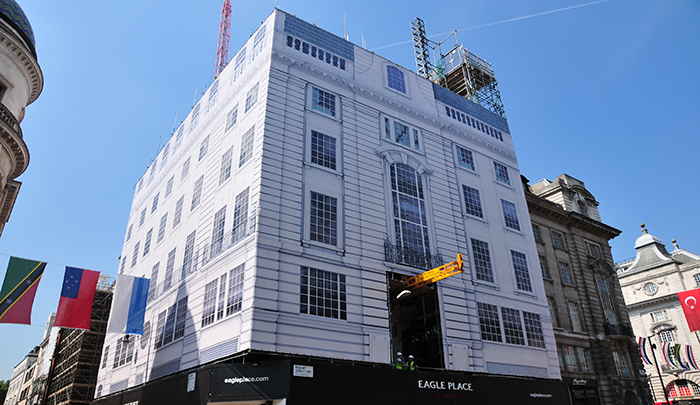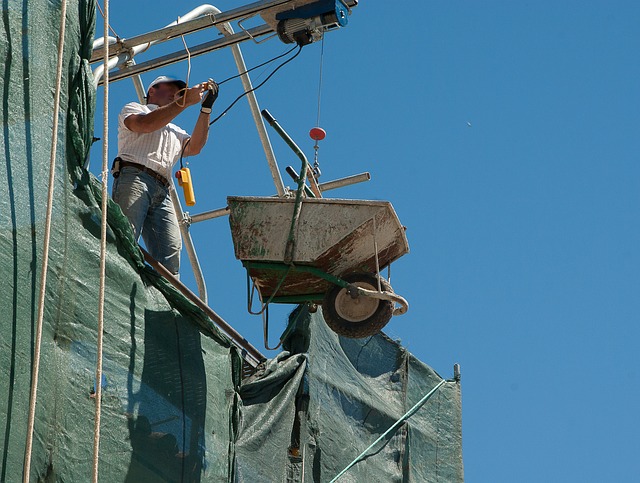Debris netting
Debris netting is used on construction sites to contain debris and on scaffolding to prevent debris from falling. It is generally made from a durable, heavy-duty, plastic netting.
The Work and Height Regulations 2005 required that where public access to a potential danger areas is necessary, then debris netting must be used to catch falling materials, including dust which can cause discomfort or eye injuries. Risk assessments must be carried out to determine the safety measures that need to be installed.
There are a number of benefits to using debris netting on a construction scaffold:
- It provides safe containment of debris, protection of workers, the public and traffic.
- Its versatility as an enclosure system means it is easy and economical to handle and can hang vertically or horizontally to achieve maximum coverage.
- The edges are reinforced with eyelets for quick and easy attachment to a scaffold using wire or plastic ties.
- It allows air movement, which can ventilate the scaffold and reduce wind loading.
- It provides shading against bright sunlight whilst allowing enough light in for tasks to be carried out.
- It gives some protection to work areas and workers from inclement weather conditions.
- It is flame retardant..
Debris netting can be made of a range of materials such as:
- Polyester.
- High-density polyethylene.
- Polypropylene.
- PVC-coated polyester.
Debris netting is typically green in colour. However, in sensitive of high profile locations, debris containment can be provided using printed materials that can for example show the façade of the building behind the material, images of the completed development, details of the project team or client, advertisements and so on. For more information see: Building wraps.
[edit] Find out more
[edit] Related articles on Designing Buildings Wiki
Featured articles and news
Infrastructure that connect the physical and digital domains.
Harnessing robotics and AI in challenging environments
The key to nuclear decommissioning and fusion engineering.
BSRIA announces Lisa Ashworth as new CEO
Tasked with furthering BSRIA’s impressive growth ambitions.
Public buildings get half a million energy efficiency boost
£557 million to switch to cleaner heating and save on energy.
CIOB launches pre-election manifesto
Outlining potential future policies for the next government.
Grenfell Tower Inquiry announcement
Phase 2 hearings come to a close and the final report due in September.
Progress from Parts L, F and O: A whitepaper, one year on.
A replicated study to understand the opinion of practitioners.
ECA announces new president 2024
Electrical engineer and business leader Stuart Smith.
A distinct type of countryside that should be celebrated.
Should Part O be extended to existing buildings?
EAC brands heatwave adaptation a missed opportunity.
Definition of Statutory in workplace and facilities management
Established by IWFM, BESA, CIBSE and BSRIA.
Tackling the transition from traditional heating systems
59% lack the necessary information and confidence to switch.
The general election and the construction industry
As PM, Rishi Sunak announces July 4 date for an election.
Eco apprenticeships continue help grow green workforce
A year after being recognised at the King's coronation.
Permitted development rights for agricultural buildings
The changes coming into effect as of May 21, 2024.
























